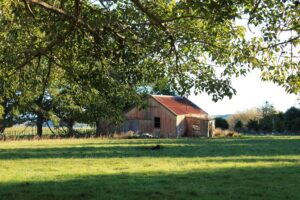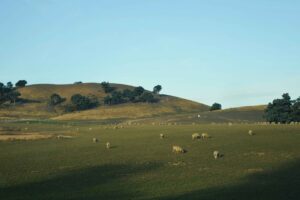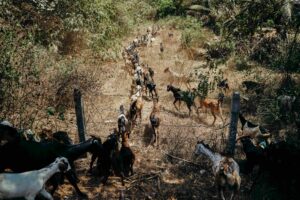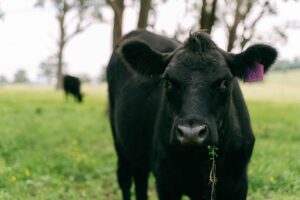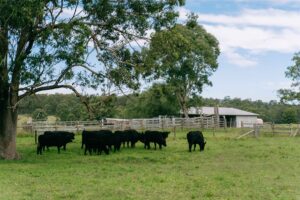Economics and Financial Considerations of Self-Sufficient Living
Creating a self-sufficient lifestyle, whether through farming, building your own habitat, or raising animals, is a rewarding and empowering choice. However, as with any major decision, it’s essential to understand the economic factors that will influence your success. This includes both the costs involved in establishing and maintaining your off-grid property, as well as the potential financial benefits that come from living self-sufficiently. When approached thoughtfully, self-sufficiency can be a sustainable way to live, offering not only a deeper connection with nature but also long-term financial rewards. This page will explore the key financial considerations involved in creating your self-sufficient lifestyle.
Initial Costs of Setting Up a Self-Sufficient Lifestyle
The initial costs of setting up a self-sufficient property can be significant, but these investments are often one-time expenditures that will pay off over time. The primary costs to consider include purchasing land, building shelter, and installing essential infrastructure. Whether you are looking for rural property in Australia or off-grid land, the price of the land will be your first major investment. Prices can vary greatly depending on location, size, and available resources.
Building your home or shelter can range from a simple cabin or tiny house to a larger, more permanent structure. Your construction costs will be influenced by the materials you choose, whether you’re sourcing local materials or purchasing prefabricated ones. Additionally, the installation of energy systems (solar panels, wind turbines, or other off-grid power sources) and water systems (rainwater harvesting, wells, etc.) will need to be factored in.
While these initial expenses can be high, the long-term savings on utilities and reliance on external services can make them worthwhile. Knowing exactly how much you need to invest upfront can give you a clearer picture of what your self-sufficient future will cost.
Ongoing Costs of Self-Sufficient Living
While self-sufficiency can reduce many ongoing expenses (such as utility bills and grocery costs), it’s important to consider the recurring costs that will keep your self-sufficient lifestyle running smoothly. These expenses will vary based on the type of self-sufficiency you aim for—whether you’re focusing on farming, livestock, or off-grid living.
For farming and raising animals, the main ongoing costs will include feed, tools, and equipment maintenance. You may also need to purchase seeds, fertilizers, and other farming essentials, especially in the early years before your crops or animals are self-sustaining. Similarly, for those living off the grid, maintenance of power systems, heating, and water systems are ongoing costs to consider.
There are also costs associated with maintaining the property itself, including repairs and upkeep of buildings and infrastructure. Even when living off-grid, property taxes and insurance will be ongoing financial obligations.
Planning ahead for these recurring costs and understanding their scope is crucial for staying within your budget and ensuring your lifestyle is financially sustainable.
Financial Benefits of Self-Sufficiency
While the initial and ongoing costs of living self-sufficiently may seem daunting, the financial benefits over time can be significant. Living self-sufficiently means reducing your reliance on the conventional economy. The most immediate benefit is the reduction in your monthly living expenses. By growing your own food, raising livestock, and producing your own energy, you can dramatically cut down on your bills.
Moreover, self-sufficient living allows you to reclaim control over your financial situation. You won’t be as vulnerable to price hikes in groceries or energy costs, which can fluctuate due to market conditions. Additionally, many self-sufficient people find that they’re able to sell excess products—such as vegetables, eggs, or handmade goods—which can provide an additional income stream.
For those looking to start a small farm or homestead, there’s also the potential to turn the land into a source of revenue. Whether through agritourism, producing organic products for sale, or offering workshops, there are numerous ways to monetize your land while still maintaining your self-sufficient lifestyle.
Finally, long-term financial sustainability comes from the ability to live without dependence on outside resources, allowing for better control over your financial future.
Economic Resilience and the Impact of Self-Sufficiency
One of the most compelling reasons to adopt a self-sufficient lifestyle is the economic resilience it offers. In times of economic downturns, natural disasters, or disruptions to the global supply chain, a self-sufficient lifestyle provides greater stability.
Having your own food supply, energy, and water sources can reduce your vulnerability to external economic pressures, such as price increases or scarcity. In the case of a financial crisis or supply chain breakdown, your reliance on the external market for basic needs can be minimized.
Moreover, living off the land offers the ability to create your own economy. You can focus on sustainable farming practices that reduce waste, improve soil health, and generate income by producing high-demand goods such as organic produce or livestock. By reducing your environmental footprint, you not only lower your operating costs but also contribute positively to the broader economy.
Understanding the long-term economic resilience of a self-sufficient lifestyle and how it can withstand market shifts is vital for planning and long-term sustainability.

